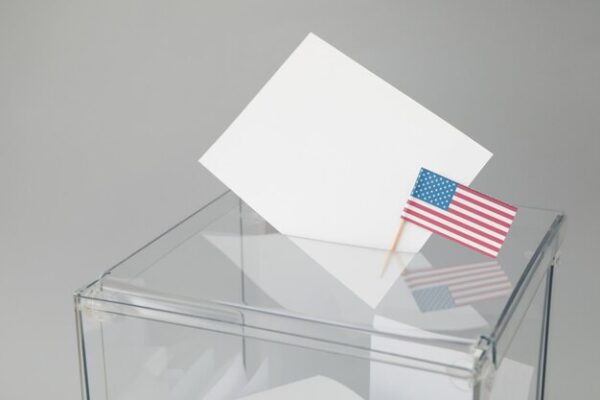Donald Trump’s Economic Playbook: A Comprehensive Outline on How the President
Could
Fight Inflation
Introduction:
During Donald Trump’s presidency, the U.S. economy experienced remarkable growth. However, as the economy grew, concerns about inflation began to surface. Inflation, defined as a sustained increase in the general price level of goods and services, can significantly impact an economy’s health. If left unchecked, it could lead to a decline in purchasing power and potentially stifle economic growth. In this article, we’ll explore
President Trump’s
potential strategies for fighting inflation based on his previous economic policies and statements.
Fiscal Policy:
Trump’s fiscal policy focused on tax cuts and deregulation to stimulate economic growth. He argued that these measures would lead to increased productivity, wage growth, and ultimately, lower inflation. However, some economists worry that the large-scale fiscal stimulus could fuel inflation if demand outstrips supply.
Monetary Policy:
Trump’s stance on monetary policy was somewhat inconsistent during his presidency. Initially, he criticized the Federal Reserve for raising interest rates, arguing they were unnecessary and could harm economic growth. Later, as inflation concerns grew, Trump urged the Fed to take a more aggressive stance on fighting inflation.
Trade Policy:
Trump’s trade policies aimed to renegotiate trade deals and impose tariffs on imported goods. Proponents argue that this could help protect domestic industries, create jobs, and potentially reduce inflation by increasing supply and competition. Critics, however, warn that tariffs could lead to higher prices for consumers and ultimately harm economic growth.
Supply-Side Policies:
Trump’s supply-side policies focused on deregulation, tax cuts, and infrastructure spending to boost productivity and economic growth. By increasing the overall supply of goods and services, these policies could help mitigate inflationary pressures. However, some argue that these measures alone may not be enough to combat inflation in the long run.
5. Conclusion:
In conclusion, Trump’s economic playbook offers several potential strategies for fighting inflation. However, the success of these policies depends on various factors, including global economic conditions, domestic politics, and the effectiveness of implementation. As inflation remains a concern for many economists and policymakers alike, understanding Trump’s economic approach can provide valuable insights into potential solutions.
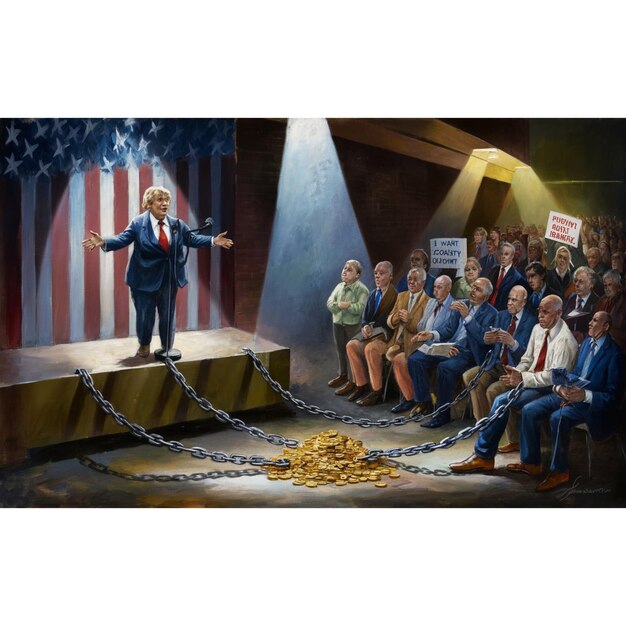
I. Introduction
During his tenure as the 45th President of the United States, Donald Trump implemented an economic policy that focused on tax cuts, deregulation, and infrastructure spending. This approach aimed to boost the economy, create jobs, and increase economic growth. However, managing inflation in a strong economy was also a critical aspect of Trump’s economic agenda.
Background of Donald Trump’s Economic Policy During His Presidency
Trump’s economic policy was characterized by significant tax cuts, particularly the Tax Cuts and Jobs Act of 2017. This legislation reduced the corporate tax rate from 35% to 21%, which was intended to encourage businesses to invest in the U.S., create jobs, and stimulate economic growth. Additionally, Trump’s administration implemented a deregulation agenda, eliminating thousands of regulations that they argued would stifle businesses and hinder economic growth.
Importance of Managing Inflation in a Strong Economy
is an economic condition where the general price level for goods and services is rising, and purchasing power is falling. It’s a critical economic indicator that can significantly impact consumer behavior, business decisions, and the overall health of an economy. Inflation above a certain level can lead to a decrease in real wages for workers, increased interest rates, and decreased consumer confidence.
Objective: Outline Potential Strategies Trump Could Employ to Fight Inflation if He Were President Again
If Donald Trump
were to become president again, he could employ several strategies to manage inflation. One potential strategy would be to focus on supply-side policies to increase productivity and reduce production costs, thereby lowering prices for goods and services. Trump could also consider implementing fiscal policies such as reducing the budget deficit or raising taxes to control demand and reduce inflationary pressures.
Supply-Side Policies
Supply-side policies
refer to economic policies aimed at increasing the supply of goods and services in an economy. Trump could implement these policies by reducing regulations, investing in infrastructure, and promoting technological innovation to boost productivity and reduce production costs. By increasing the supply of goods and services, inflationary pressures could be reduced as there would be more options for consumers, which would lead to competition among businesses and lower prices.
Fiscal Policies
Fiscal policies
are economic policies aimed at managing the economy through government spending and taxation. Trump could implement these policies by reducing the budget deficit or raising taxes to control demand in the economy. By reducing the amount of money circulating in the economy, inflationary pressures could be reduced as there would be less competition among businesses for resources and consumers for goods and services.

Understanding Inflation and Its Impact on the Economy
Definition and causes of inflation
Inflation refers to a general increase in prices for goods and services over a period of time. Demand-pull inflation, also known as aggregate demand-induced inflation, occurs when demand for goods and services exceeds the available supply. Conversely, cost-push inflation, or cost-induced inflation, arises when production costs increase, leading to higher prices for consumers.
Demand-pull and cost-push inflation
Demand-pull inflation can be triggered by factors such as government spending, tax cuts, or increases in consumer spending. On the other hand, cost-push inflation can result from factors like wage pressures, increased raw material prices, or supply chain disruptions.
Consequences of high inflation on the economy
Decreased purchasing power: High inflation erodes the value of money, making each unit worth less. This reduces the purchasing power of consumers and businesses.
Increased interest rates: Central banks often raise interest rates to combat inflation, making borrowing more expensive and reducing demand for goods and services.
Adversely affects businesses and consumers: Inflation can lead to uncertainty, disrupting production planning and financial forecasting. Moreover, it can put pressure on profit margins for businesses, potentially leading to reduced investment and hiring.
Importance of keeping inflation at a stable level
For economic growth and stability: A stable inflation rate allows for predictable economic conditions, enabling businesses to plan for the future. It also helps maintain consumer confidence, which is essential for economic growth.
To maintain confidence in the currency: High inflation can lead to a loss of faith in a country’s currency, potentially resulting in capital outflows and further depreciation.
Ensuring predictability for businesses and consumers: A stable inflation rate provides a sense of certainty, enabling businesses to make long-term plans and investors to allocate resources accordingly.
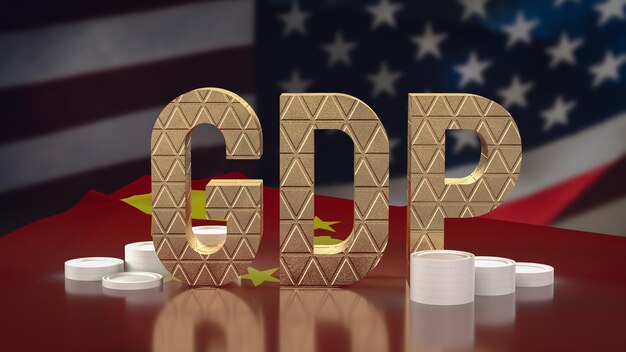
I Trump’s Economic Toolkit: Monetary Policy
Overview of monetary policy and the Federal Reserve
Monetary policy refers to the actions taken by a central bank, such as the Federal Reserve, to influence the supply of money and credit in an economy to achieve specific economic objectives. The Federal Reserve, often referred to as the “Fed,” is the central bank of the United States, established in 191Its primary goals include maintaining price stability and maximum employment.
Trump’s stance on the Fed during his presidency
Criticism of low-interest rates
During his presidency, Donald Trump frequently criticized the Federal Reserve for maintaining low-interest rates. He believed that low rates artificially stimulated the economy and caused inflation, while also making it more challenging for the U.S. to compete economically with other countries.
Appointment of Jerome Powell as Federal Reserve Chair
In 2018, Trump appointed Jerome Powell to succeed Janet Yellen as the Federal Reserve Chair. Powell was considered a centrist within the Fed, and his appointment did not satisfy some of Trump’s more hawkish advisors who wanted a chairman more inclined to raise interest rates.
Potential actions Trump could take to fight inflation through monetary policy
Appointing hawkish Fed members
To increase pressure on the Federal Reserve to raise interest rates, Trump could have attempted to appoint more hawkish (i.e., inflation-focused) members to the Federal Open Market Committee (FOMC), which sets monetary policy for the Fed. However, this would depend on Congress confirming these appointments and potential resistance from Democrat-controlled bodies.
Publicly pressuring the Fed to raise interest rates
Trump could also publicly pressure the Federal Reserve to raise interest rates, which some believe may influence its decision-making process. However, this approach carries risks, as the Fed is an independent institution, and constant public criticism might damage its credibility.
Implementing a rule-based approach for setting interest rates
Another option would be to push for a rule-based approach for setting interest rates, such as an inflation target or a specific rule that automatically adjusts rates based on economic indicators. This could provide more predictability and potentially reduce political influence over the Fed’s decision-making process.
Changing the Federal Reserve Act to give the President more control over monetary policy
A more radical solution would be for Trump to advocate for changing the Federal Reserve Act to grant the President greater control over monetary policy. Such a change would require extensive negotiation with Congress and could face significant opposition from both parties, given the Fed’s independence.
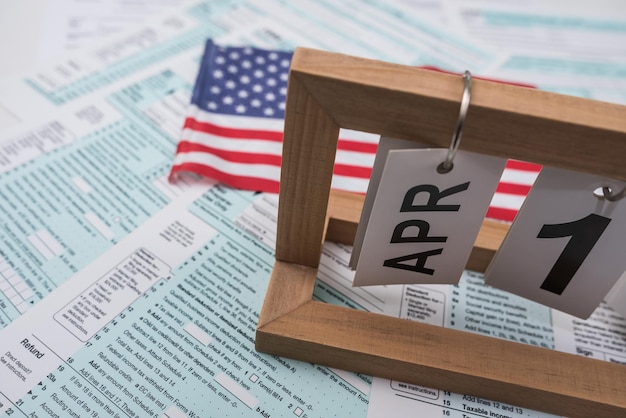
Trump’s Economic Toolkit:
Fiscal Policy
Fiscal policy, a component of macroeconomic policy, refers to the use of government spending and taxation to influence economic activity. It is considered a tool for managing
inflation
. When inflation rises above the target level, fiscal policy can be used to cool down the economy and reduce demand, thereby helping to control inflationary pressures. Conversely, when the economy is in a recession and inflation is low or nonexistent, fiscal policy can be used to stimulate demand and boost economic growth.
Trump’s Fiscal Policies during His Presidency
During his presidency, Donald Trump implemented several fiscal policies aimed at boosting economic growth and stimulating demand. One of the most significant fiscal policies was the
Tax Cuts and Jobs Act
, which was signed into law in December 2017. This legislation lowered corporate tax rates from 35% to 21%, as well as reduced individual tax rates and eliminated some deductions. The act was designed to incentivize businesses to invest in the US economy, create jobs, and increase wages for workers.
Another area where Trump focused his fiscal policies was on
infrastructure, border security, and defense
. He proposed a $1.5 trillion infrastructure plan aimed at upgrading the country’s roads, bridges, airports, and other critical infrastructure. Additionally, Trump requested significant funding for border security, including the construction of a wall along the US-Mexico border, and increased defense spending to rebuild the military.
Potential Actions Trump Could Take to Fight Inflation through Fiscal Policy
If inflation were to rise significantly during Trump’s presidency, he could take several actions to fight inflation through fiscal policy. One approach would be to implement supply-side reforms, such as deregulation and reducing taxes, which can increase productivity and reduce costs for businesses. By increasing supply and decreasing demand, this approach could potentially reduce inflationary pressures.
Another potential action would be for Trump to implement a
balanced budget or surplus
. This would reduce government spending and borrowing, reducing the need for higher interest rates to control inflation. Trump could also address entitlement programs, such as Social Security, Medicare, and Medicaid, which are major contributors to the federal budget and could impact inflation if their growth is not contained. Reforms to these programs could help prevent their growth and potential impact on inflation.

Trump’s Economic Toolkit:
Trade Policy
Trade policy is a crucial economic tool used by governments to regulate international commerce. It can significantly impact inflation by influencing the supply and demand of goods and services in an economy.
Overview of trade policy and its impact on inflation
Trade policy can lead to inflationary pressures when a country imports more than it exports, resulting in a trade deficit. This increased demand for foreign goods can put upward pressure on domestic prices. Conversely, when a country exports more than it imports, it experiences a trade surplus, which can lead to downward pressure on prices as domestic goods flood the global market.
Trump’s trade policies during his presidency
During his presidency, V.Trump implemented several trade policies aimed at protecting American industries and addressing perceived unfair trading practices by other countries.
Implementation of tariffs under Section 232 and 301
In 2018, Trump imposed tariffs on steel and aluminum imports under Section 232 of the Trade Expansion Act. The justification was national security concerns. Later, he imposed tariffs on Chinese goods under Section 301 of the Trade Act in response to alleged intellectual property theft and forced technology transfer by China.
Potential actions Trump could take to fight inflation through trade policy
Despite the potential negative effects of tariffs on inflation, Trump could also employ other trade policies to combat inflationary pressures.
Negotiating free trade agreements with key trading partners
Trump could negotiate free trade agreements with key trading partners to increase exports and reduce imports. This would help decrease demand-pull inflation by increasing the supply of domestic goods in the market.
Creating a level playing field and ensuring fair trade practices
Ensuring fair trade practices is essential to prevent inflationary pressures from imported goods. Trump could work towards creating a level playing field by addressing issues such as intellectual property theft, forced technology transfer, and subsidies provided to foreign industries.
Increasing exports and reducing imports to decrease demand-pull inflation
Trump could implement policies aimed at increasing exports while reducing imports to decrease demand-pull inflation. This could include investments in infrastructure, tax incentives for businesses that export, and efforts to remove trade barriers in key markets.
Implementing targeted tariffs on specific goods or countries
Targeted tariffs could be used to address trade imbalances and reduce the impact of imported inflationary pressures. For example, Trump could impose tariffs on specific Chinese goods that are contributing significantly to the trade deficit or inflationary pressures in the US market.
Addressing trade imbalances and reducing the impact of imported inflationary pressures
By addressing trade imbalances, Trump could help reduce the impact of imported inflationary pressures on the US economy. This could include efforts to encourage export growth and discourage import dependence in key industries or sectors.
Implementing a value-added tax or border adjustment tax to offset potential negative effects on exports and businesses
Finally, Trump could implement a value-added tax or border adjustment tax to offset any potential negative effects on exports and businesses resulting from his trade policies. Such a tax would help ensure that domestic producers are not at a disadvantage compared to foreign competitors, while also generating revenue for the government to invest in infrastructure or other economic development initiatives.
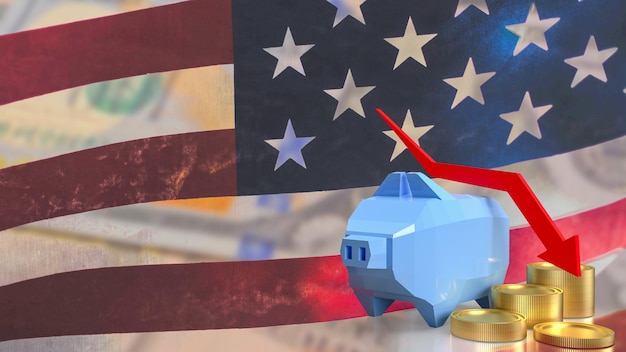
Overview of balancing monetary and fiscal policy to manage inflation
Balancing
Trump’s approach during his presidency
During his presidency,
Criticism of the Fed for not coordinating with fiscal policy
Trump argued that the Fed should have coordinated its monetary policy actions with his fiscal policies to ensure a more effective response to inflation. He believed that lower interest rates would help spur economic growth and reduce inflationary pressures, rather than hinder it.
Potential actions Trump could take to balance monetary and fiscal policy to fight inflation
If Trump had wanted to more effectively balance monetary and fiscal policy, he could have taken several steps.
Regular communication between the Fed and the Treasury Department
First, he could have encouraged regular communication between the Fed and the
Implementing a rule-based approach for both monetary and fiscal policy
Second, Trump could have implemented a rule-based approach for both monetary and fiscal policy. This would have provided transparency and predictability in economic decision-making, allowing markets to better understand the direction of policy and adjust accordingly.
Addressing potential conflicts between monetary and fiscal policies
Third, Trump could have addressed potential conflicts between monetary and fiscal policies, such as during recessions or periods of high unemployment. This could have involved ensuring a consistent approach to managing inflation across both policy areas, rather than allowing them to operate at cross-purposes.
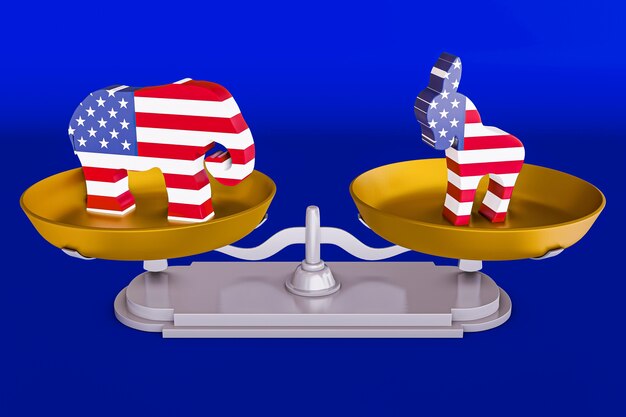
V Conclusion
In this analysis, we have explored the various economic tools that President Trump employed to combat inflation during his presidency.
Recap of Trump’s Economic Toolkit for Fighting Inflation
He utilized a combination of monetary, fiscal, and regulatory policies to address the issue. Monetarily, he appointed Jerome Powell as Federal Reserve Chair, who raised interest rates three times in 2018 to keep inflation in check. Fiscally, the administration implemented tax cuts and increased spending on infrastructure projects. Regulatively, deregulation was a key focus to spur economic growth.
Importance of a Balanced and Consistent Approach to Managing Inflation in the Economy
It is crucial to note that managing inflation requires a balanced and consistent approach. The interplay between monetary, fiscal, and regulatory policies can significantly impact the economy’s price levels. An imbalance or inconsistency could lead to unintended consequences, such as stagflation or hyperinflation.
Potential Implications of Trump’s Economic Policies on Inflation, Depending on Their Implementation and Execution
President Trump’s‘ economic policies, particularly his aggressive fiscal measures and deregulation efforts, have the potential to impact inflation significantly.
If implemented effectively,
these policies could spur economic growth and lead to lower inflation due to increased productivity and competition. However,
if not executed correctly
, they could result in higher inflation due to increased demand without a corresponding increase in supply. Moreover, the trade tensions initiated by President Trump’s protectionist policies could also contribute to inflationary pressures through disrupted global supply chains and increased tariffs.


